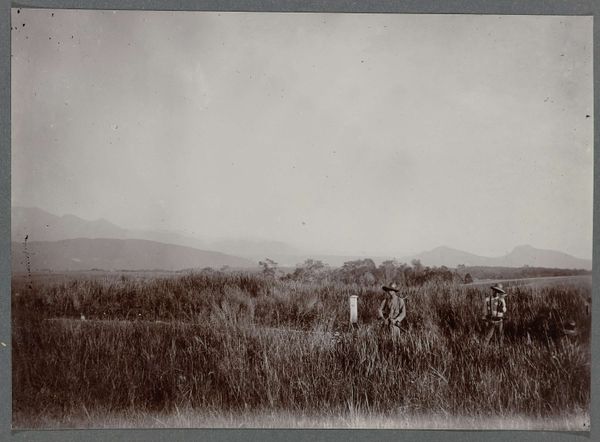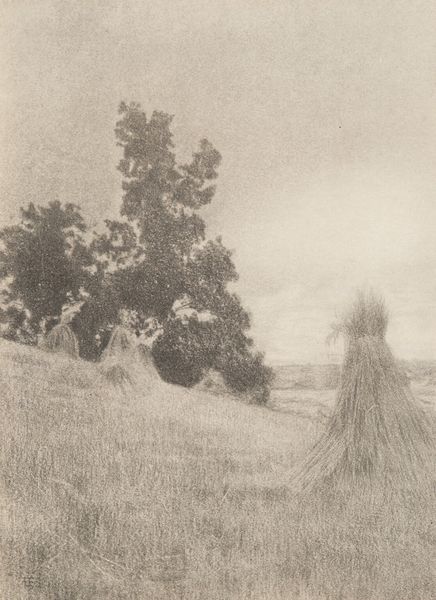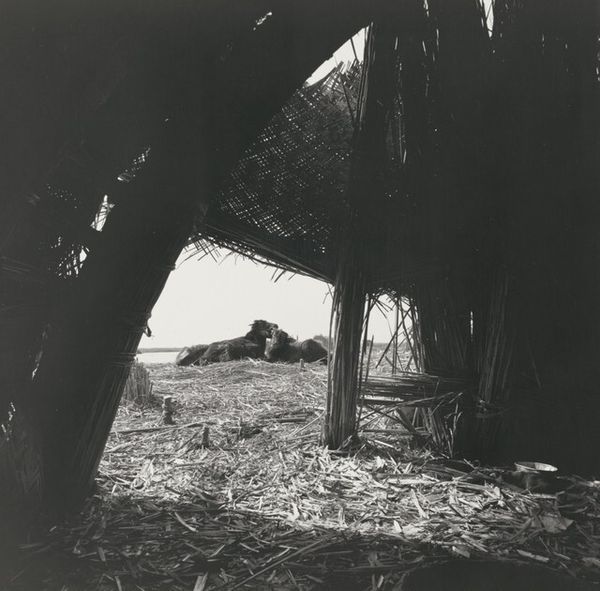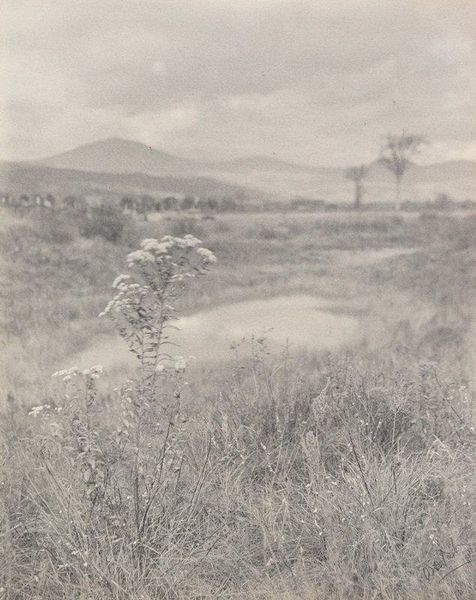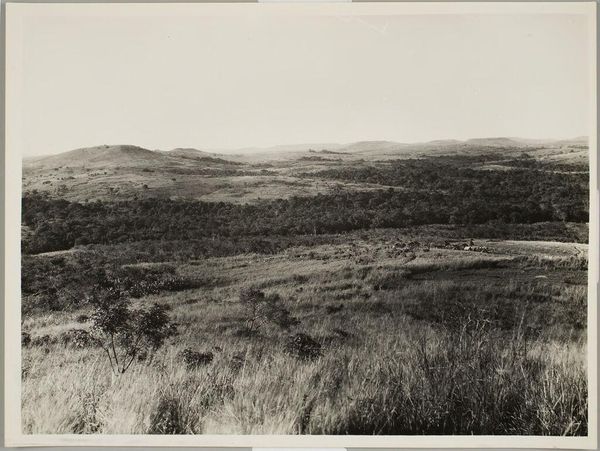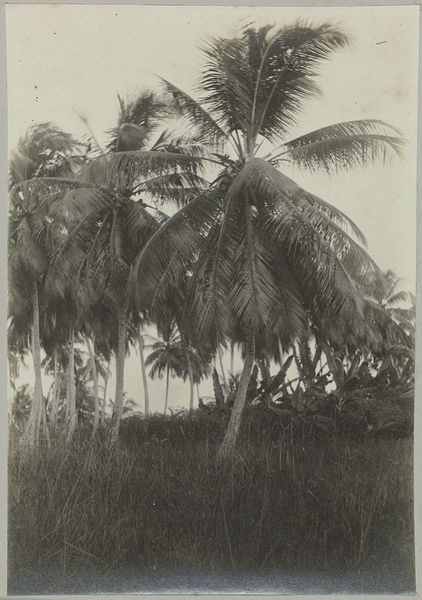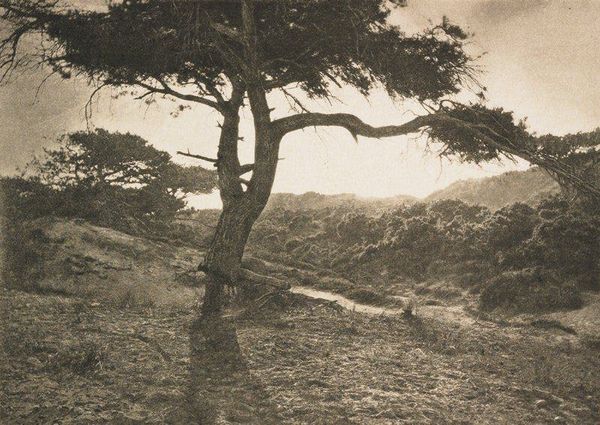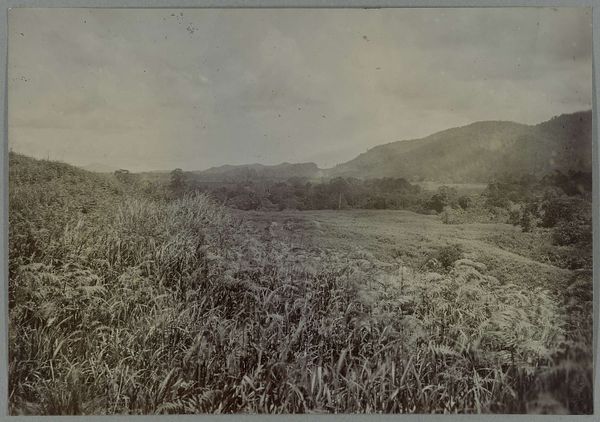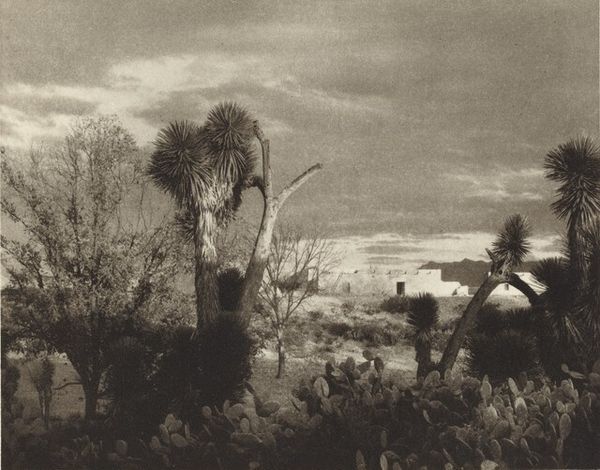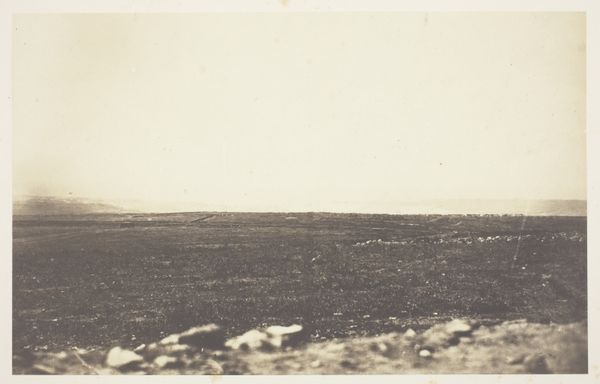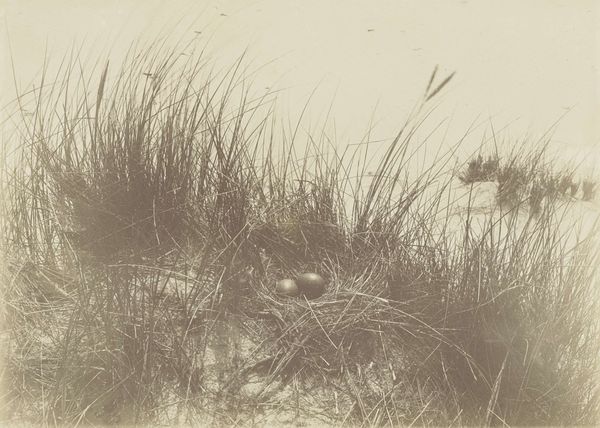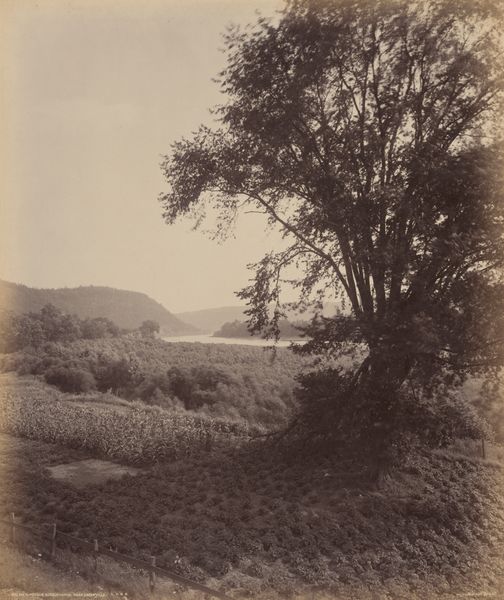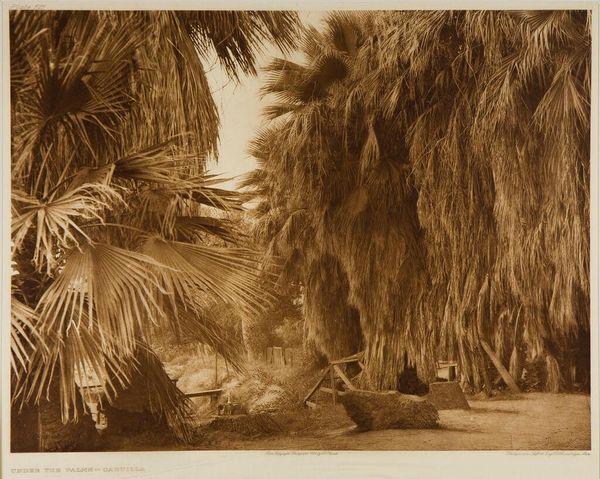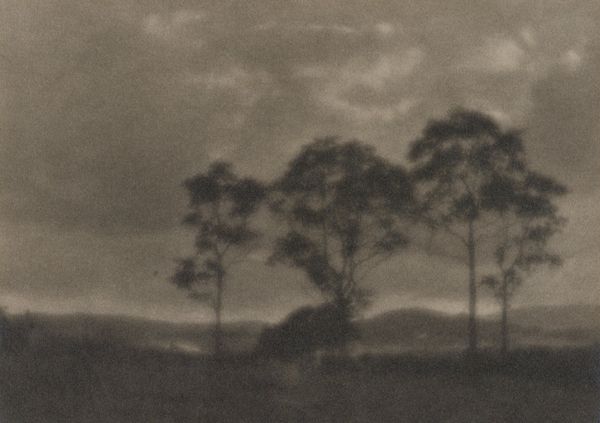
photography, gelatin-silver-print
#
still-life-photography
#
pictorialism
#
landscape
#
charcoal drawing
#
photography
#
pencil drawing
#
gelatin-silver-print
#
charcoal
#
graphite
#
realism
Dimensions: 9 5/16 x 7 9/16 in. (23.65 x 19.21 cm) (image)12 x 10 in. (30.48 x 25.4 cm) (mount)
Copyright: No Copyright - United States
Curator: There’s something profoundly melancholic about this image, don't you think? It’s as if time itself is wearing down to a sepia tone. Editor: You're right. The mood is definitely subdued. We’re looking at "As Daylight Fails", a gelatin silver print likely created in the late 19th or early 20th century by William B. Post. It’s part of the collection here at the Minneapolis Institute of Art. What do you think stands out? Curator: Those stooks, or shocks, of wheat. They look like huddled figures, bowing to the inevitable twilight. It makes me think of transient things, like harvest cycles or the arc of a life. Editor: Precisely. That theme of temporality was key in pictorialism, and Post’s involvement in organizations such as The Linked Ring foregrounded debates about photography as fine art in public exhibitions. Note how he softens the details to evoke atmosphere and mood. It's not just a documentary record. It's intentionally painterly, isn’t it? Curator: Absolutely. You can practically feel the silence of the field. It feels as if Post staged a quiet scene using elements drawn from Realism. The entire composition steers away from the documentary and embraces symbolic weight. Editor: And it speaks to anxieties of that period, I think, the fin de siècle feeling as rapid industrialization transformed rural landscapes and traditions. The aesthetic, by embracing muted tones and focusing on simple rural images, speaks to those displaced during the urbanization of the era. It also provided an argument to show the "artistic" merit of photography to new audiences. Curator: You’re right; photography found an early champion in questioning those values. Considering Post's involvement, it brings us to reflect on both the aesthetic choices and the social currents feeding this photograph. Makes you wonder what daylight revealed, and what shadows concealed for Post. Editor: Indeed. In a way, this work is more about evocation than description. I’d wager Post intended it that way, prompting future generations to question their understanding of what it meant to preserve something through photographic practice.
Comments
No comments
Be the first to comment and join the conversation on the ultimate creative platform.
